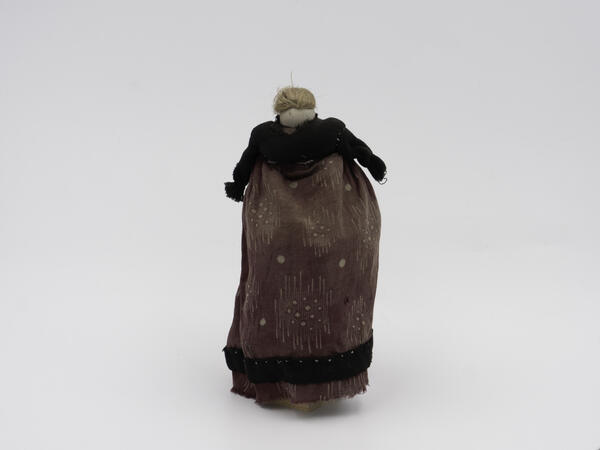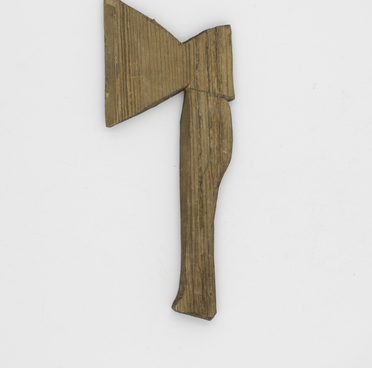Rag dolls in the Russian folk tradition had existed since ancient times. According to researcher Galina Dain: ‘Back in the middle of the twentieth century, rag dolls were played with in every family in the village and city. And only since the 1960s, when industrial enterprises began to produce millions of batches of plastic toys, the tradition of making a rag doll almost died out. However, it did not disappear completely, having been deeply engraved in people’s memory.’
The rag doll was the most common toy in Russia. Such toys could be found in every farmhouse. They were created not only for entertainment. One of the main purposes of the Slavic folk doll was to protect the house and its inhabitants. It was often used in magical rituals and holidays: special dolls were made for a wedding, the birth of a child, and other important events.
It was believed that only a woman was able to make a strong amulet that would protect a child. Dolls from rags and straw were mainly created for girls to play with. At the same time, people did not draw faces on dolls, allowing the child to use imagination and paint the toy herself. Initially, the ‘faceless’ dolls symbolized the purity of thoughts. In ancient times, the Slavs did not draw and embroider their faces, so that evil spirits would not enter them and other people’s evil thoughts would not be reflected.
Another important feature of Russian folk dolls was the way they were made: they were made without using scissors and needles. This technique was also supposed to protect the child from the evil eye. This is where the names of some dolls also come from: ‘rvanka’ was a doll made from scraps of cloth torn by hands (from the Russian verb ‘to tear’ ‘rvat’), and ‘motanki’ were dolls made from threads (from the Russian verb ‘to wind’ ‘motat’).
All the toys were homemade then. Moreover, in each family, dolls were made in their own way, so it was next to impossible to find two identical ones. They were made by both parents and children themselves. The materials used were very different: straw and the fabric like on the doll from the museum exhibition were used. Also, the craftswomen used birch bark, clay, cones, branches, and ropes. It was believed that by playing with dolls, the girl acquired the skills of a hostess and a mother.
Up to the age of 7, both girls and boys played with dolls. In the future, the ability to make dolls was considered an advantage. If the girl was good at making toys, it meant that she would become a good craftswoman. Children learned everyday things from making dolls: sewing, embroidery, spinning, and mending. Sometimes toys were inherited as a dowry of a girl getting married. Then these toys were passed to her children.
The rag doll was the most common toy in Russia. Such toys could be found in every farmhouse. They were created not only for entertainment. One of the main purposes of the Slavic folk doll was to protect the house and its inhabitants. It was often used in magical rituals and holidays: special dolls were made for a wedding, the birth of a child, and other important events.
It was believed that only a woman was able to make a strong amulet that would protect a child. Dolls from rags and straw were mainly created for girls to play with. At the same time, people did not draw faces on dolls, allowing the child to use imagination and paint the toy herself. Initially, the ‘faceless’ dolls symbolized the purity of thoughts. In ancient times, the Slavs did not draw and embroider their faces, so that evil spirits would not enter them and other people’s evil thoughts would not be reflected.
Another important feature of Russian folk dolls was the way they were made: they were made without using scissors and needles. This technique was also supposed to protect the child from the evil eye. This is where the names of some dolls also come from: ‘rvanka’ was a doll made from scraps of cloth torn by hands (from the Russian verb ‘to tear’ ‘rvat’), and ‘motanki’ were dolls made from threads (from the Russian verb ‘to wind’ ‘motat’).
All the toys were homemade then. Moreover, in each family, dolls were made in their own way, so it was next to impossible to find two identical ones. They were made by both parents and children themselves. The materials used were very different: straw and the fabric like on the doll from the museum exhibition were used. Also, the craftswomen used birch bark, clay, cones, branches, and ropes. It was believed that by playing with dolls, the girl acquired the skills of a hostess and a mother.
Up to the age of 7, both girls and boys played with dolls. In the future, the ability to make dolls was considered an advantage. If the girl was good at making toys, it meant that she would become a good craftswoman. Children learned everyday things from making dolls: sewing, embroidery, spinning, and mending. Sometimes toys were inherited as a dowry of a girl getting married. Then these toys were passed to her children.



